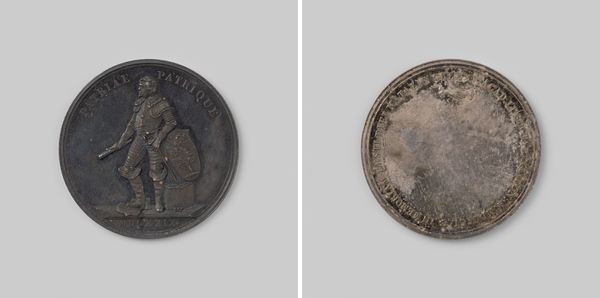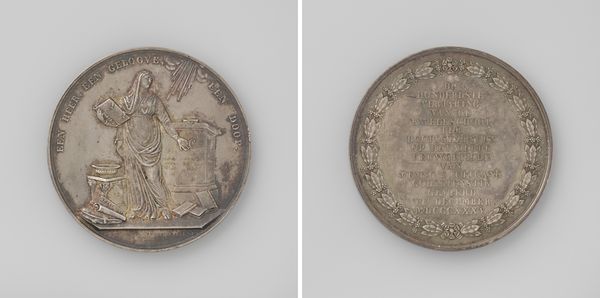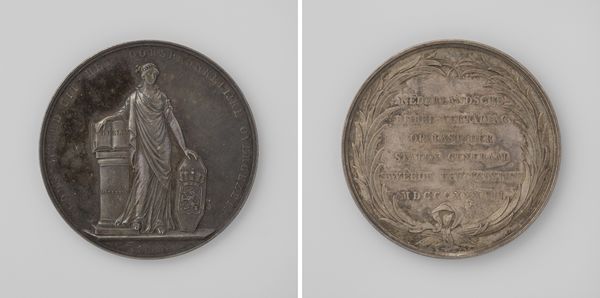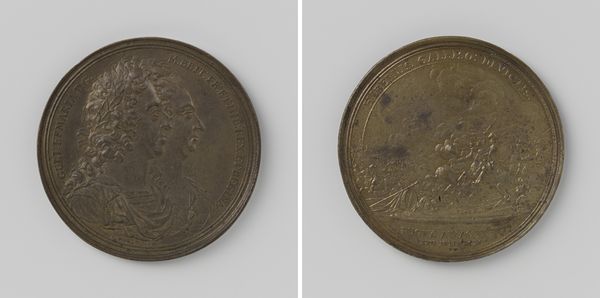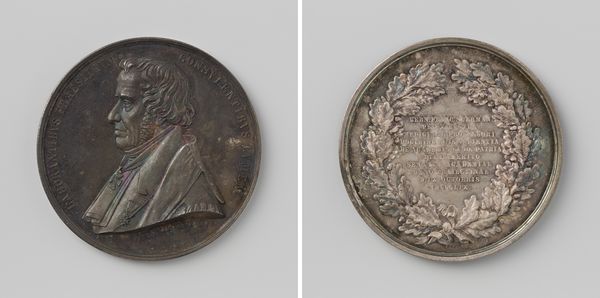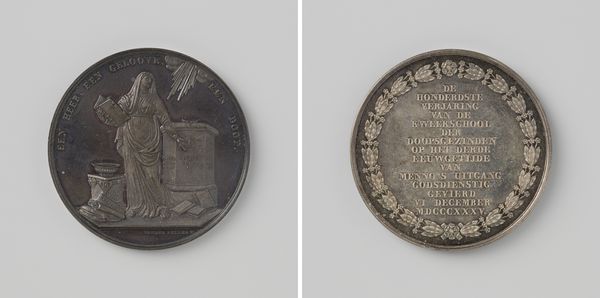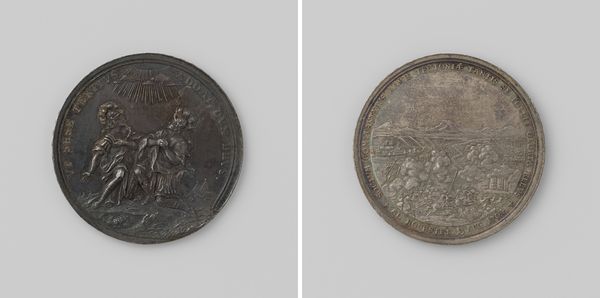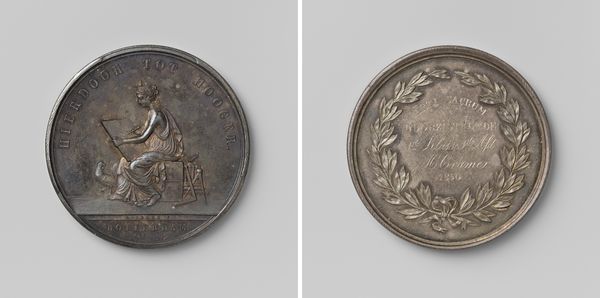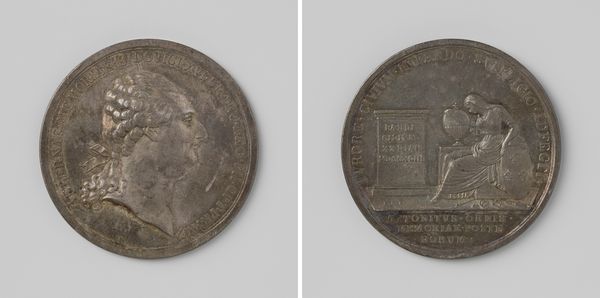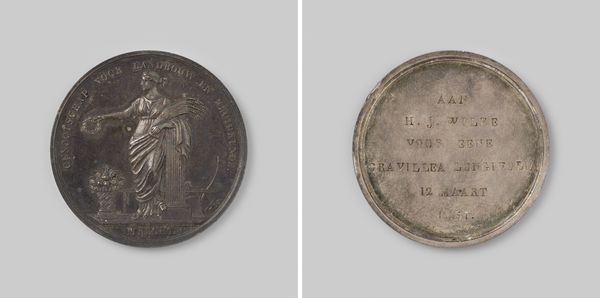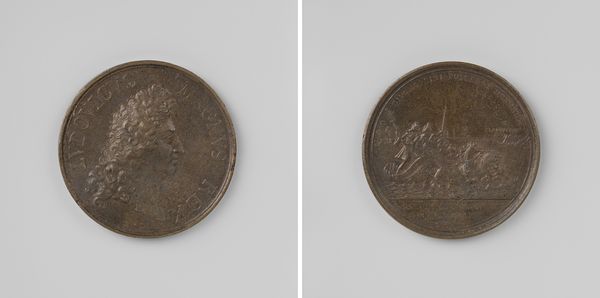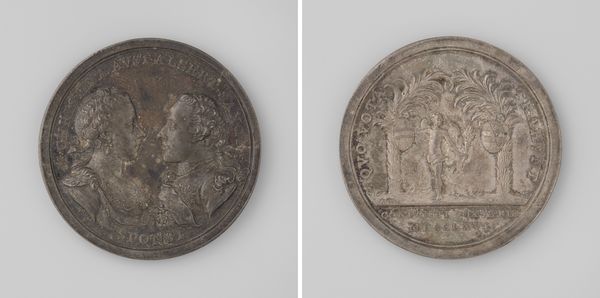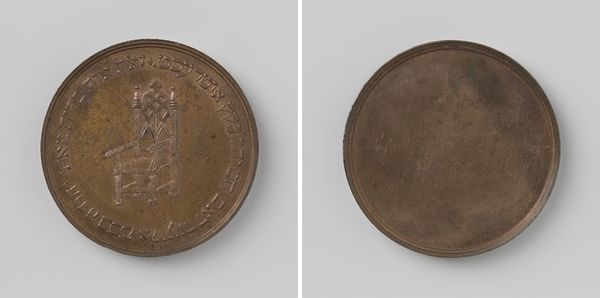
Genootschap voor landbouw en kruidkunde te Utrecht, penning uitgereikt aan F.H.J. van der Hoop 1843
0:00
0:00
metal, sculpture, engraving
#
portrait
#
neoclacissism
#
metal
#
sculpture
#
sculpture
#
engraving
Dimensions: diameter 4.8 cm, weight 34.88 gr
Copyright: Rijks Museum: Open Domain
Editor: This engraved medal, crafted in 1843 by David van der Kellen, commemorates the Society for Agriculture and Herbal Medicine in Utrecht. The goddess-like figure on the front gives it a distinctly neoclassical feel, and it seems to be a commemorative object. What can you tell me about the role medals like this played in 19th-century society? Curator: It's fascinating how these seemingly small objects reflect broader socio-political currents. In the 19th century, medals like this were not simply decorative; they were powerful tools for shaping public perception and reinforcing societal values. Awarding a medal wasn’t just about recognizing individual merit. It served as a public endorsement of the society’s ideals, in this case, agricultural advancement and botanical knowledge. The neoclassical imagery, as you noted, with the allegorical female figure, would have linked these pursuits to the perceived glory and rationality of the classical world, lending them greater authority and prestige. Editor: So, by presenting this image in the neoclassical style, the Society hoped to tie their work to that history? It's interesting that something meant for the advancement of technology looked backward! Curator: Exactly. By consciously drawing on classical motifs, organizations and institutions sought to legitimize their activities and cultivate a specific public image, associating themselves with ideals of progress and reason. Who was included, who commissioned the image and why – those factors determined how people received them. Editor: I never thought of it that way. Seeing it as a constructed image shaping public thought really shifts my understanding. It's much more active than I initially imagined. Curator: Indeed. These objects participated actively in the social construction of knowledge and power. So next time, consider the who, why, and for whom. Editor: Absolutely, this has really given me a new perspective to look at medals and other seemingly minor art objects. Thanks!
Comments
No comments
Be the first to comment and join the conversation on the ultimate creative platform.
